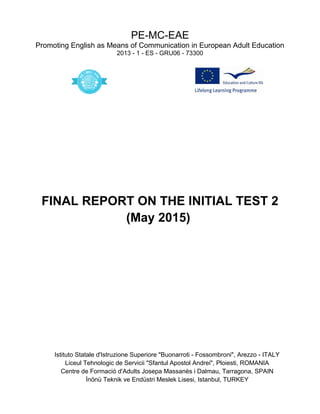The document is a final report on an initial English proficiency test given to 27 adult students in Arezzo, Italy. It summarizes the test results and provides the following conclusions:
1. The majority of students were between 18-24 years old and had studied English for 7+ years. Most had not taken extra English classes.
2. Students performed best on exercises testing reading comprehension, matching questions to answers, and rearranging dialogue lines. They struggled most with creating polite expressions.
3. Compared to previous results, listening skills and writing showed the most improvement. Reading skills were already strong.
4. Younger students generally performed better than older students who had fewer years of English study.






















































